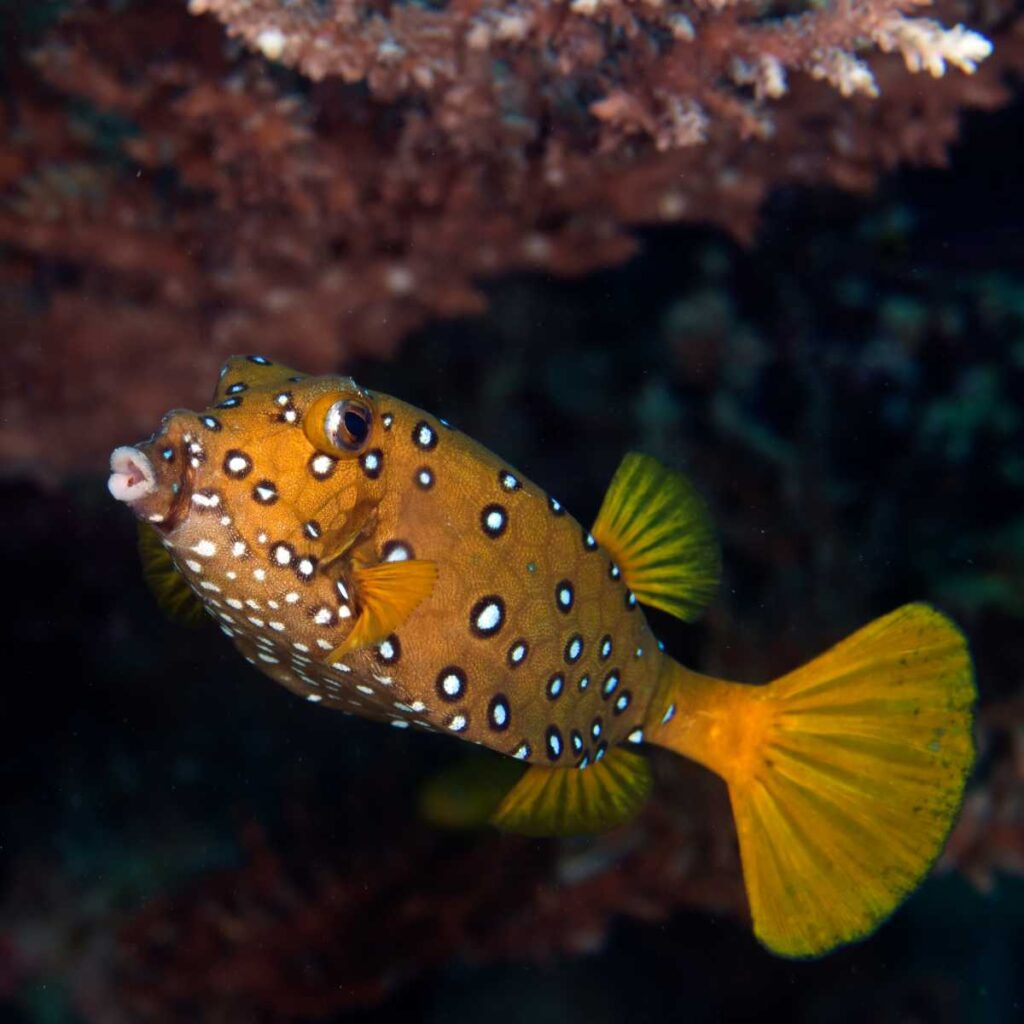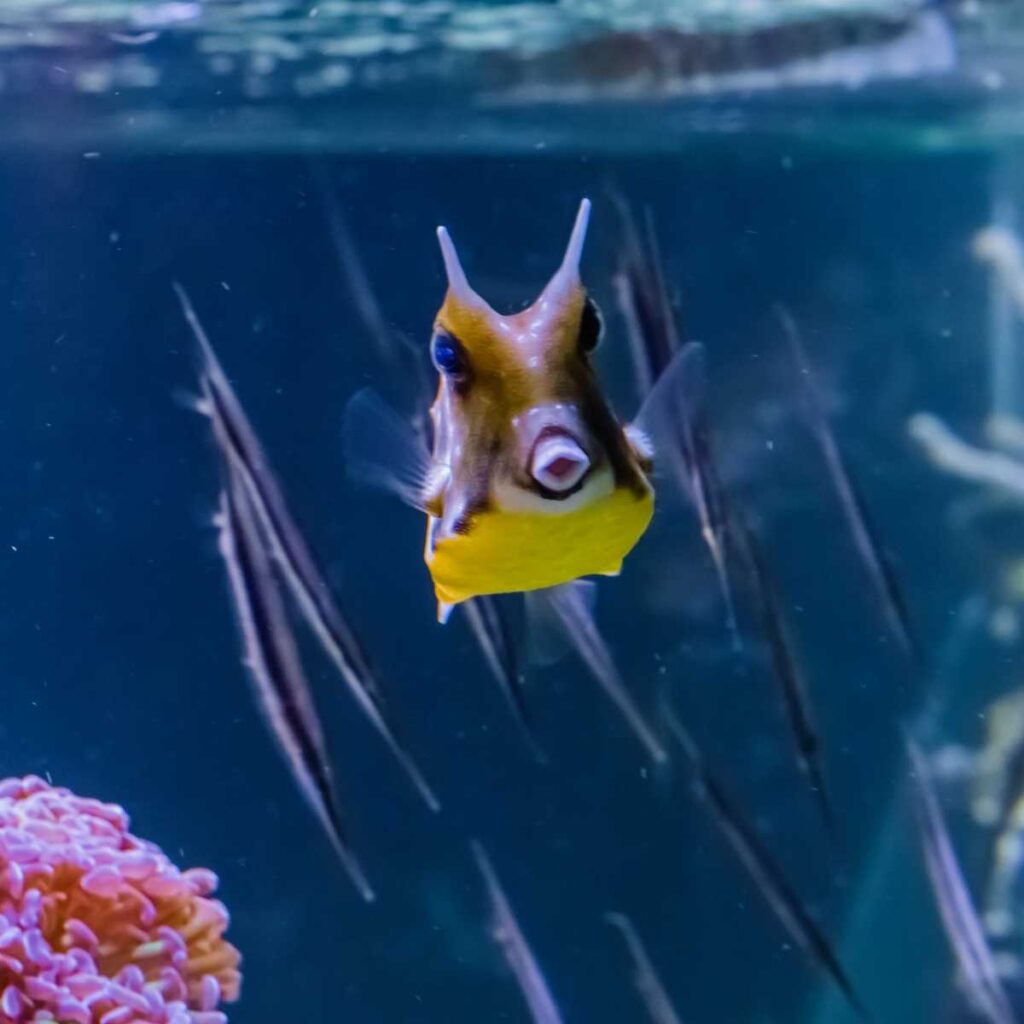Last Reviewed and Updated on January 25, 2023
Boxfish are a group of marine fish known for their unique box-like shape. Let’s explore some of the most interesting facts about boxfish, including their habitat, diet, reproduction, and more. From the impressive horns that some species exhibit to how they change color throughout their lives, boxfish are truly fascinating creatures.

About Boxfish
Boxfish are a group of marine fish that belong to the family Ostraciidae. These fish are closely related to pufferfish.
There are about 23 different living species of boxfish. They are native to tropical and subtropical waters in the Atlantic, Indian, and Pacific oceans.
They are known for their box-like shape, caused by the bony plates covering their body.
Boxfish are carnivorous and mostly feed on small invertebrates such as crustaceans and mollusks.
They reproduce by laying eggs, which are fertilized externally; the eggs are then left to float in the water, where they hatch into larvae. The larvae have a planktonic stage before they settle on the bottom as juveniles.
Facts About Boxfish
You read through the basics; now it’s time to learn some of the most fascinating and fun facts about boxfish.

1. Boxfish have an exoskeleton
Boxfish have a special triangular or cube-shaped carapace exoskeleton made of bony plates that provides protection and gives them their unique shape. The exoskeleton is composed of ganoine – a material similar to tooth enamel that is harder than bone, making it incredibly sturdy and durable.
2. Young boxfish are more round in shape
Most adults are generally square or triangular in shape, but young boxfish have softer, more rounded shapes.
3. They are slow swimmers
Their shape makes them slow swimmers; they are, however, highly maneuverable.
They are capable of short bursts of fast swimming if there is a need.
4. Some boxfish are very poisonous
They are all poisonous to eat to some extent. When it comes to human consumption, some species are a no-no, some have to be very carefully prepared, and a few are generally OK without any delicate techniques, but occasional poisonings still happen.
6. Some release strong toxins when threatened
As part of their defensive mechanism, boxfish can release toxins (to various degrees of strength depending on the species).
Some only cover their skin with these toxins and only do so when they are touched (and are only dangerous when ingested), while others can release larger amounts of toxin into the water when they are startled (and some startle easily). These toxins are able to kill many fish that happen to be too close.
5. Yellow boxfish lose their color as they age
Yellow boxfish are known for their bright yellow color. Younger individuals have a more striking bright yellow coloration, which starts to fade as they age. Older fish have blue-grey to black coloration with faded yellow.
7. Some boxfish have horns

Not all boxfish have horns. Some species of boxfish, such as the Cowfish and the Horned Boxfish, have horns or spines on their head. Other species, such as the Yellow Boxfish, do not have horns or spines.
The purpose of the horns is not fully understood, but it is believed that they may be used for defense, to deter predators as the horns make it difficult to swallow these fish or to establish dominance among other boxfish. If damaged, the horns can grow back,
8. Some species have gender dimorphism, and some do not
The spotted or white-spotted boxfish (Ostracion meleagris) is one of the species where there is a visible difference between males and females as they have different coloration (males are more black on the back, while females and young are browner). With many species, there is virtually no difference between a male and a female.
9. All thornbacked boxfish are born female
All thornbacked boxfish (Tetrosomus gibbosus) are born female but some change into males as they grow.
10. Boxfish can inflate their body when threatened
Like its “cousin,” the pufferfish, a boxfish can inflate its body.
